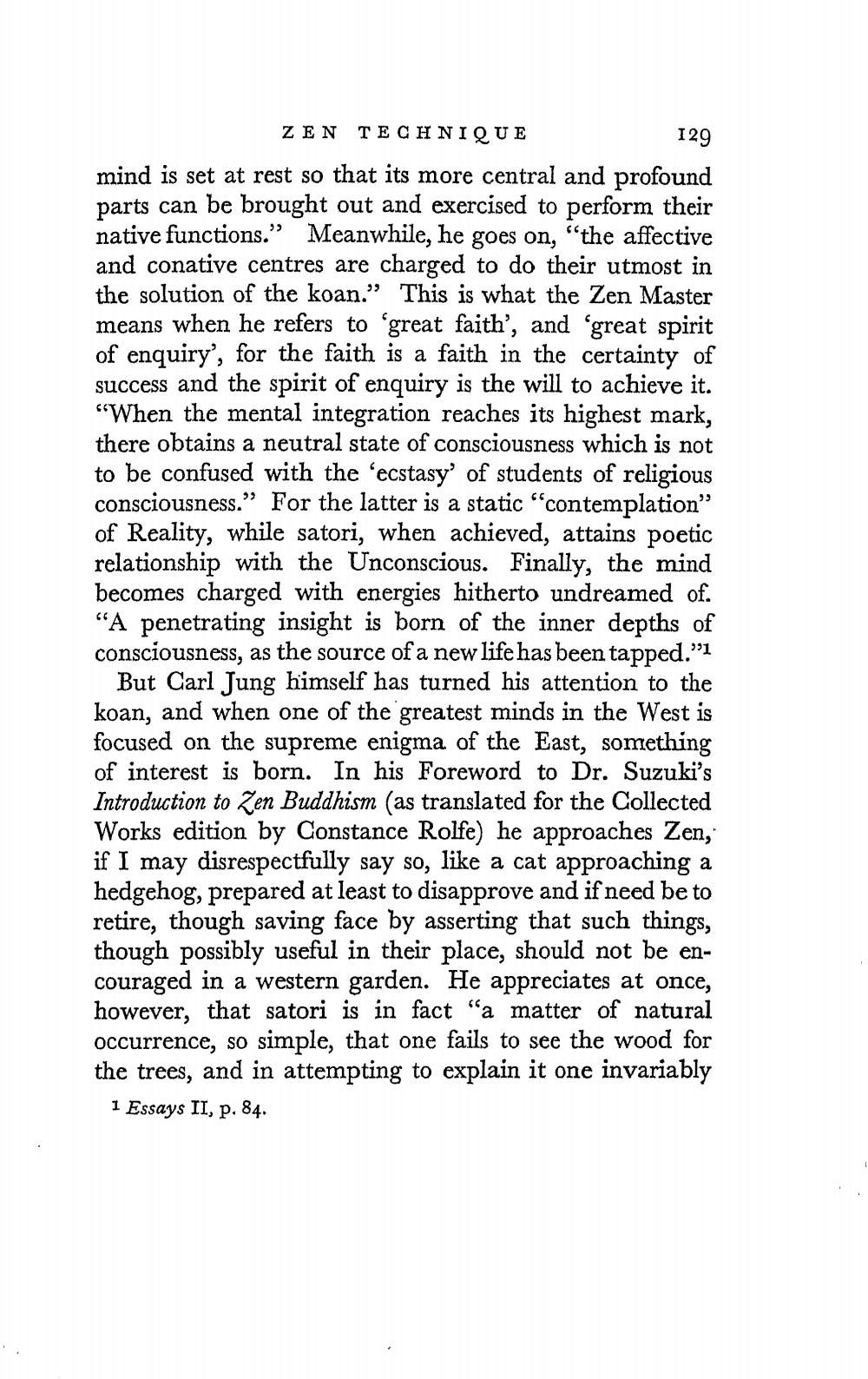________________
ZEN TECHNIQUE
129
mind is set at rest so that its more central and profound parts can be brought out and exercised to perform their native functions.” Meanwhile, he goes on, “the affective and conative centres are charged to do their utmost in the solution of the koan." This is what the Zen Master means when he refers to 'great faith', and 'great spirit of enquiry', for the faith is a faith in the certainty of success and the spirit of enquiry is the will to achieve it. “When the mental integration reaches its highest mark, there obtains a neutral state of consciousness which is not to be confused with the 'ecstasy' of students of religious consciousness.” For the latter is a static contemplation" of Reality, while satori, when achieved, attains poetic relationship with the Unconscious. Finally, the mind becomes charged with energies hitherto undreamed of. “A penetrating insight is born of the inner depths of consciousness, as the source of a new life has been tapped."'1
But Carl Jung himself has turned his attention to the koan, and when one of the greatest minds in the West is focused on the supreme enigma of the East, something of interest is born. In his Foreword to Dr. Suzuki's Introduction to Zen Buddhism (as translated for the Collected Works edition by Constance Rolfe) he approaches Zen, if I may disrespectfully say so, like a cat approaching a hedgehog, prepared at least to disapprove and if need be to retire, though saving face by asserting that such things, though possibly useful in their place, should not be encouraged in a western garden. He appreciates at once, however, that satori is in fact "a matter of natural occurrence, so simple, that one fails to see the wood for the trees, and in attempting to explain it one invariably 1 Essays II, p. 84.




